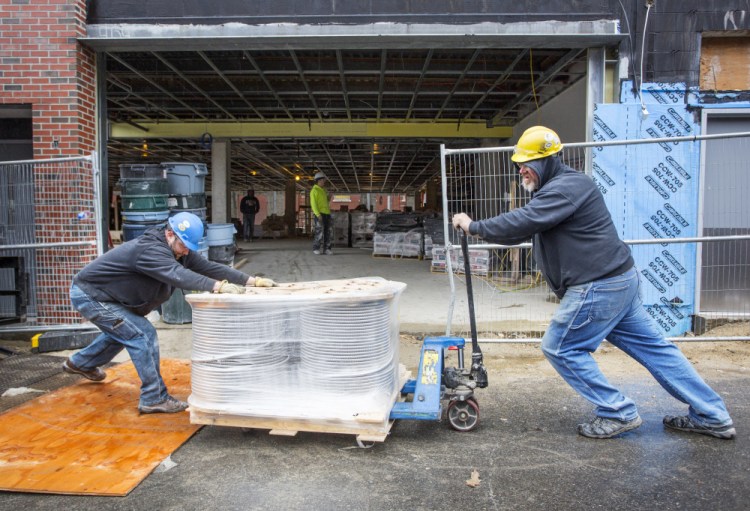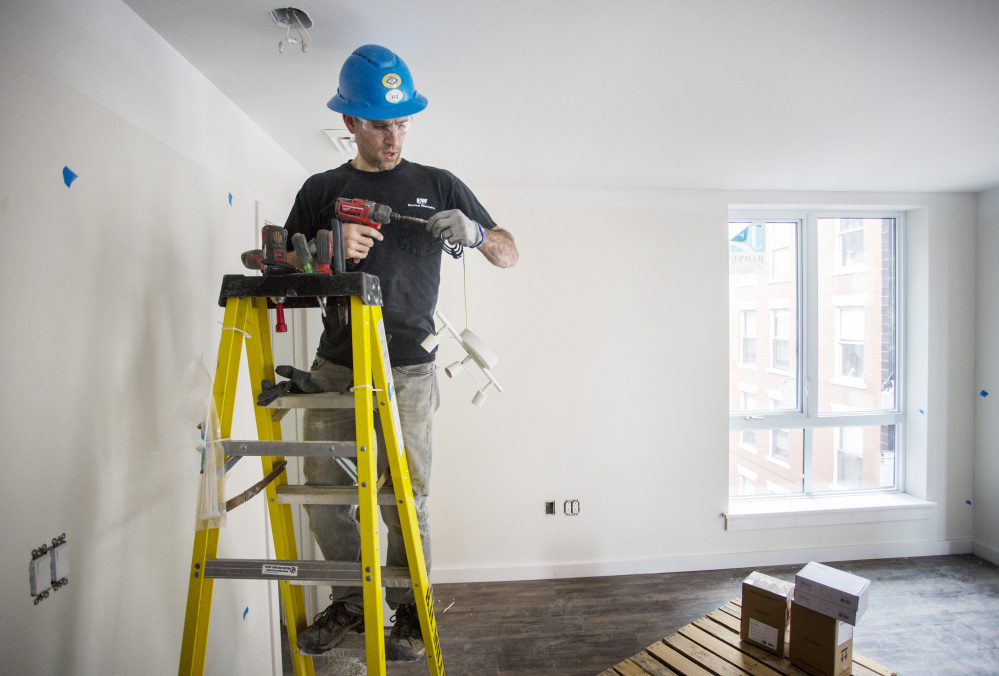Maine’s preliminary unemployment rate hit a 40-year low of 3.0 percent in March, driven in part by high job gains in construction, transportation, education and healthcare – and an aging population.
“The economic recovery is finally washing across Maine’s shores,” said Michael Donihue, an economics professor at Colby College. “Labor markets are really tight. The thing to watch for next is what happens to wages.”
March’s preliminary seasonally adjusted unemployment rate was down from 3.2 percent in February and 3.7 percent a year ago. The March rate in Maine compares to a national unemployment rate of 4.5 percent last month.
Arkansas, Colorado and Oregon also reported their lowest unemployment rates since the current methodology was implemented in 1976. Colorado’s rate, at 2.6 percent, was the nation’s lowest.
Gov. Paul LePage, in a statement, lauded the new figures.
“This shows that our efforts to lower taxes, reform welfare and bring fiscal responsibility to government are working,” he said in the statement. “Liberals are trying to reverse all the progress we have made by raising taxes and expanding welfare. We must work even harder now to continue our progress and stop the liberals from harming the economy with their tax-and-spend policies.”
But the unemployment rate doesn’t paint a complete picture of the labor market.
The labor force, whose activity is measured by the unemployment rate, is made up of people who have jobs and people who are unemployed but actively looking for work. It does not capture people who aren’t looking for work – students, retirees, homemakers – or people who have stopped looking for work even though they might want a job.
In Maine, it’s the older workers who have retired, or moved here as retirees, that move the needle on the unemployment rate, said economist Charles Lawton.
“Demographics – the aging population – is the single most significant factor in the low unemployment rate,” said Lawton, because a shrinking labor force drives down the unemployment rate.
That means there’s a “critical need” to attract more workers to Maine, he said.
“If employers can’t attract the workers they need, their businesses will be undermined and could close,” Lawton said. “This would further increase the fiscal pressure on the state.”
Economists in Maine have been warning for years that the state is headed for a significant labor shortage.
John Ryan, president of the Wright-Ryan construction company, said they have a hard time finding workers, both skilled and unskilled.
“We’ve been coming out of the recession steadily for the last several years,” Ryan said.
“The low unemployment figure is a wonderful thing on the one hand,” he said. “But our company is experiencing difficulty hiring people at all levels.”

Their subcontractors – plumbing, drywall, painting companies – are also short on labor.
“Subcontractors just don’t have enough people. You beg. You cajole. They want to help, but they can’t. So you have two people when you need six,” he said.
“That’s a terrible situation. We’re looking to perform at a high level on projects with very demanding schedules with inadequate resources.”
That in turn affects wages. Ryan wouldn’t say if he’s had to pay workers more, but he said “it’s safe to say there is increased pressure on wages.”
To meet the need for more workers, Ryan said, the company is beefing up its in-house training program and forming new internships and partnerships with vocational schools, community colleges and the university system.
Maine’s unemployment rate was lower than the average rate among New England states, which was 3.8 percent in March.
Maine and Vermont had the second-lowest unemployment rates of the New England states at 3.0 percent, compared to 2.8 percent in New Hampshire, 3.6 percent in Massachusetts, 4.3 percent in Rhode Island, and 4.8 percent in Connecticut.
The Maine Republican Party also touted the figures, crediting LePage’s policies.
“The pro-growth policies of the LePage administration and pro-growth Republican legislators are doing exactly what they promised,” Demi Kouzounas, chair of the Maine Republican Party, said in a release. “Not only has unemployment decreased, but private sector employment has skyrocketed to an all-time high for our great state. Additionally, employment in government jobs is at its lowest percentage in history.”
Maine House Republicans said the falling unemployment rate was proof that conservative policies have worked in the state.
“Now more than ever we need to stay the course and that means passing policies that continue to move Maine in the right direction,” said Assistant House Republican Leader Rep. Ellie Espling of New Gloucester.
“Our focus is on implementing a 2-year budget that reduces the overall tax burden on all Mainers and continues to promote this type of job growth.”
The number of nonfarm payroll jobs for March was up 5,300 from a year ago to 623,000, an all-time high.
The sectors that saw the largest job gains were in construction, trade, transportation, utilities, education and health care.
Government jobs comprised 16.0 percent of nonfarm jobs, the lowest share on record.
Unemployment rates declined over the year in all Maine counties, with the lowest rate, 2.5 percent, in Cumberland County and the highest, 6.9 percent, in Washington County.
The unemployment rate was lower than the statewide average in the Portland-South Portland metro area, at 2.6 percent.
Noel K. Gallagher can be reached at 791-6387 or at:
ngallagher@pressherald.com
Send questions/comments to the editors.





Comments are no longer available on this story